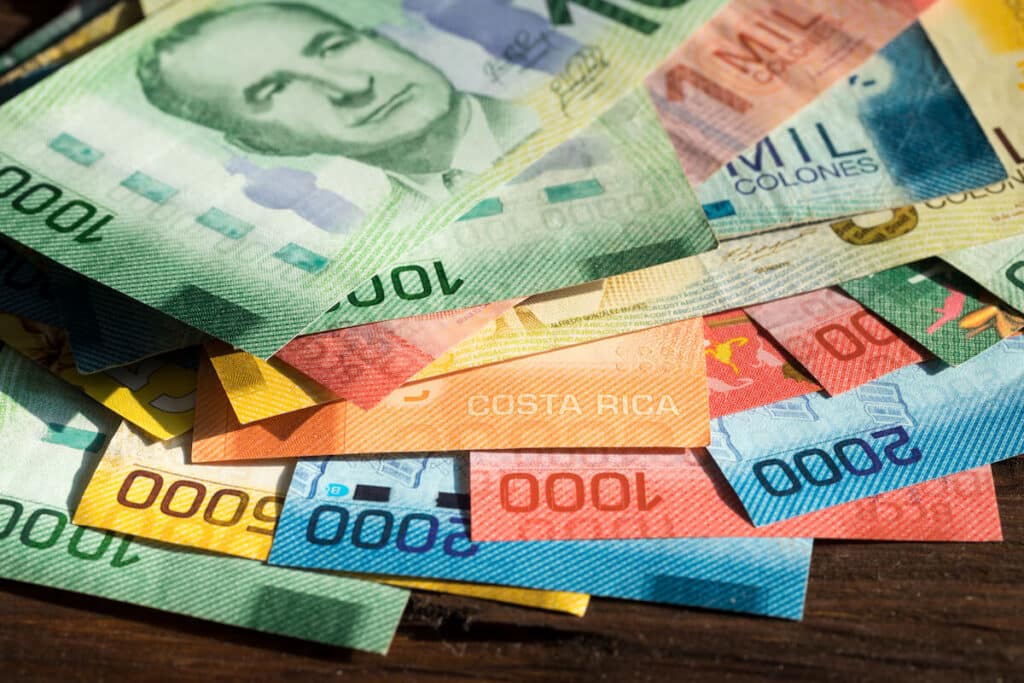Last updated on April 11th, 2024 at 02:27 pm
Located in Central America, Costa Rica is known for its beautiful beaches, lush rainforests, and friendly locals. But that’s not all. It is a popular destination for digital nomads, expats, and retirees thanks to the lenient property ownership laws. Plus, Costa is renowned for a high quality of life at an affordable cost of living.
If you’re considering making a move, here’s a detailed breakdown of how much your Costa Rican lifestyle may cost.
Is Costa Rica expensive?
The cost of living in Costa Rica is generally lower than in the United States, Canada, and many European countries. This means your dollar goes further in Costa Rican cities than it does in New York, London, or Toronto.
According to Numbeo’s 2023 cost of living index, Costa Rica ranks as the 56th most expensive country out of the 140 countries listed.
This means Costa Rica is cheaper than most developed countries, but more expensive than many developing countries.
Cost of living in Costa Rica by city

The average cost of living in Costa Rica can vary significantly by city.
For example, the capital city San Jose is the most expensive city in Costa Rica while San Ramon is one of the most affordable. Here’s a quick comparison between the two.
Here are the approximate average prices in San Jose, according to Numbeo’s cost of living comparison tool:
- Meal in a cheap restaurant: $9.40
- Meal in a mid-range restaurant: $50
- Milk: $6
- Internet: $52
- Gym membership: $48
Here are the average prices in San Ramon:
- Meal in a cheap restaurant: $6
- Meal in a mid-range restaurant: $34
- Milk: $3
- Internet: $47
- Gym membership: $30
Other cities and towns with a lower cost of living include Atenas, Grecia, and San Isidro de El General.
These smaller towns are located in the Central Valley region and offer a more laid-back lifestyle at a lower cost than larger cities or touristy beach towns.
Factors in Costa Rican cost of living

The cost of living in Costa Rica can vary significantly depending on your lifestyle and location.
For example, a single person who lives in a small town and cooks most of their meals will have a much lower cost of living than a family of four that lives in a city and frequently eats out.
Typically, living in a tourist area or the city center will be pricier than living in a suburban or rural area. But even then, living in the city center of Costa Rica is cheaper than living in the city center of any North American, Canadian, or European city.
When you’re planning your monthly budget, consider the following factors.
Healthcare costs
Fortunately, healthcare costs in Costa Rica are relatively low as the country has a universal healthcare system. It’s called Caja Costarricense de Seguro Social (CCSS).
Employed individuals have to pay a monthly contribution to the CCSS based on their income, but those without means can access healthcare under this system for free.
As of this writing, employees have to pay about 23% of their salary to participate. But the employer covers about 14% of it, so workers only have to pay about 9%.
Expats can join the program in a similar manner, but tourists and short-term visitors are only covered by CCSS in case of emergencies.
While it’s mandatory for residents to get CCSS, private health insurance is also available. The premiums for the private health insurance plans backed by the government are determined based on income level but tend to be around $60 to $250. This usually covers about 80% of medical costs.
Expats often choose to get a mix of public and private health insurance as the wait time for CCSS can be long. Even without health insurance, paying out of pocket is relatively cheap as a doctor’s visit costs about $60, specialty care can cost $100, and a dental exam is about $200.
Housing in Costa Rica
Housing costs in Costa Rica are generally lower than in many developed countries, but they have been steadily increasing in recent years as the destination becomes popular.
Yet, as of this writing, the rent prices in Costa Rica are about 68% lower than in the U.S. and 51% lower than in the U.K., according to Numbeo’s cost of living comparison tool.
For example, a one-bedroom apartment in the city center of Costa Rica will rent for about $500.
Renting an apartment is often the most affordable option, although purchasing a home can be a good investment for those planning to stay in the country for an extended period of time.
As with other countries, real estate prices in Costa Rica vary significantly by location, with homes in the city center or tourist areas (like Tamarindo) largely costing more than those in suburban or rural areas.
Food prices
Food in Costa Rica is typically cheaper than what you would find in the U.S. or the U.K., but some everyday essentials can be slightly more expensive or similarly priced.
For example, a gallon of milk is under $4 in the U.S. but almost $6 in Costa Rica. A 1.5-liter bottle of water is also slightly more expensive at $2.12 in Costa Rica, compared to $1.91 in the U.S.
Eating out in Costa Rica tends to be less expensive than in other countries. An average meal in a cheap diner can be around $8 and up to $50 for a mid-range restaurant.
Public transportation
Public transportation in Costa Rica is generally inexpensive, with local bus fares costing less than $1.
In larger cities like San Jose, you can easily find a wide variety of transport options like public buses and private taxis, but these may be limited in smaller towns and rural areas.
Schools
Public schools in Costa Rica are free for all children, even foreigners, as long as they prove proficiency in Spanish.
Private schools and international schools are pricier but still cheaper than getting an education in the U.S. or the UK. For example, an international primary school costs about $8,000 in Costa Rica at the time of this writing.
Median salary in Costa Rica
At the time of this writing, the average monthly salary after tax is about $800 in Costa Rica. Actual wages will vary depending on the job. For example, here’s the median monthly salaries for different professions:
- Teacher: $970
- Architect: $1,025
- Financial analyst: $1,337
- Mechanical engineer: $1,892
- Attorney: $3,269
If you’re an expat wanting to work in Costa Rica, it can be difficult to get work if you aren’t a permanent resident. The government has tight restrictions on work visas to prevent foreigners from taking jobs that could be filled by Costa Rican citizens.
If you don’t have a work visa and aren’t a permanent resident, your best options are to open your own business or work remotely for a company in another country.
Currency in Costa Rica

The currency in Costa Rica is the Costa Rican colón (CRC). One Costa Rican colón is subdivided into 100 centimos.
The value of the Costa Rican Colón is much lower compared to the U.S. dollar (USD) or the British pound (GBP).
Many regions, especially the beach towns, city centers, and tourist areas, accept payments in USD.
Sending money to Costa Rica
If you’re considering moving to Costa Rica, you’ll likely need to send and receive money across borders, Remitly can help.
Remitly makes international money transfers faster, easier, more transparent, and more affordable. Our reliable and easy-to-use mobile app is trusted by over 5 million people around the world.
